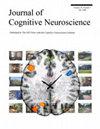Homeostatic Feelings and the Emergence of Consciousness
IF 3.1
3区 医学
Q2 NEUROSCIENCES
引用次数: 0
Abstract
In this article, we summarize our views on the problem of consciousness and outline the current version of a novel hypothesis for how conscious minds can be generated in mammalian organisms. We propose that a mind can be considered conscious when three processes are in place: the first is a continuous generation of interoceptive feelings, which results in experiencing of the organism's internal operations; the second is the equally continuous production of images, generated according to the organism's sensory perspective relative to its surround; the third combines feeling/experience and perspective resulting in a process of subjectivity relative to the image contents. We also propose a biological basis for these three components: the peripheral and central physiology of interoception and exteroception help explain the implementation of the first two components, whereas the third depends on central nervous system integration, at multiple levels, from spinal cord, brainstem, and diencephalic nuclei, to selected regions of the mesial cerebral cortices.同态感受与意识的萌发》(Homeostatic Feelings and the Emergence of Consciousness)。
在这篇文章中,我们总结了我们对意识问题的看法,并概述了目前关于哺乳动物如何产生有意识思维的新假设。我们提出,当三个过程同时进行时,思想就可以被认为是有意识的:第一个过程是持续产生相互感知的感觉,从而体验生物体的内部运作;第二个过程是同样持续产生图像,根据生物体相对于周围环境的感官视角产生图像;第三个过程将感觉/体验和视角结合在一起,从而产生相对于图像内容的主观性过程。我们还提出了这三个组成部分的生物学基础:内感知和外感知的外周生理学和中枢生理学有助于解释前两个组成部分的实现,而第三个组成部分则取决于中枢神经系统的整合,从脊髓、脑干、间脑核到中脑皮层的选定区域等多个层次。
本文章由计算机程序翻译,如有差异,请以英文原文为准。
求助全文
约1分钟内获得全文
求助全文
来源期刊
CiteScore
5.30
自引率
3.10%
发文量
151
审稿时长
3-8 weeks
期刊介绍:
Journal of Cognitive Neuroscience investigates brain–behavior interaction and promotes lively interchange among the mind sciences.

 求助内容:
求助内容: 应助结果提醒方式:
应助结果提醒方式:


